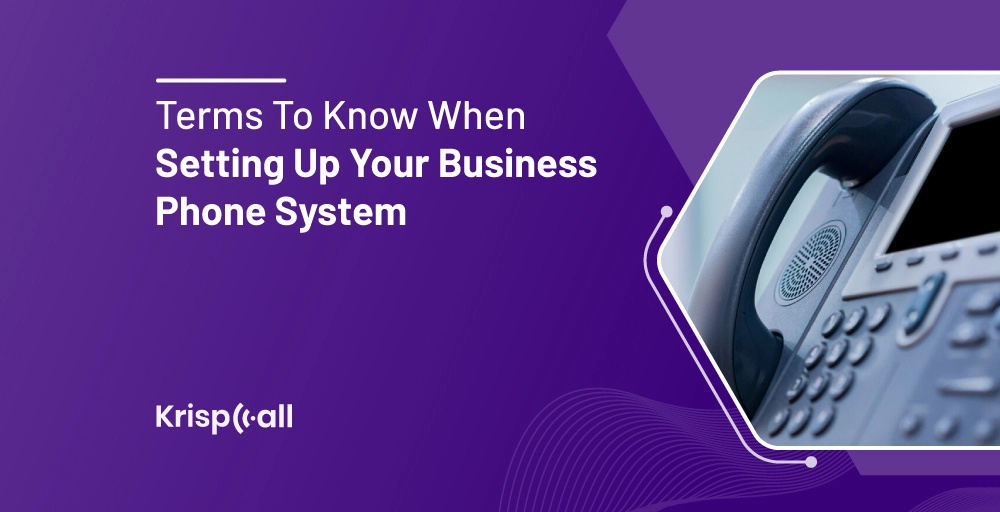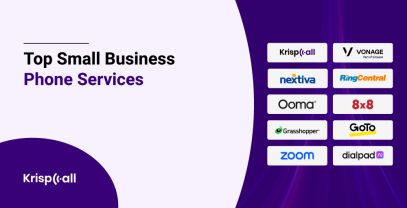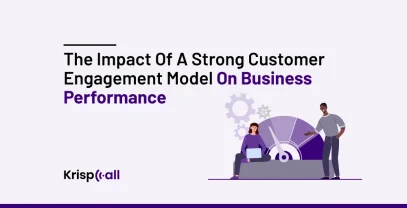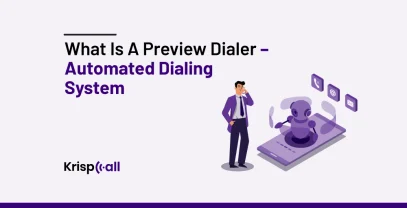Since the late 90s, business phone systems have changed significantly in many ways. And with so many frequent changes, it can be difficult to set up a business phone system 📲. This is especially true when there are so many technical terms and options involved. 🤔
Now the things without having a clear understanding of the terms involved, businesses may struggle to find the right approach. This struggle often becomes a source of frustration since it inevitably leads to inefficiencies and missed opportunities.
In this guide, you’ll learn the key terms that you need to understand when setting up your business phone system and why it is important to know those. As a result, you will be able to make informed decisions that will enhance your business telephony operations. 🎉
🔑 Key Highlights
- Before setting up, it is important to know standard business phone system terms to have clear communication, informed decision-making, and choosing the right system.
- Telephony features, types of phone numbers, telephone and network systems, and cloud-based phone systems must be understood before setting up a business phone system.
- Terms like PBX, KSU, and VoIP represent different phone system types.
Why Is It Important To Know Standard Business Phone System Terms Before Setup?
Setting up a business phone without any hitches is a difficult task on its own. The other aspect is that it is much more important to understand standard phone system terminology before implementation.
Just so to make sure that seamless integration of the phone system is achieved within the organization’s preexisting infrastructure and that it can do what it’s meant to do.
Here are some of the reasons why you should know the standard business phone system terms before setup:
To Make Informed Decisions
Features like call forwarding, auto attendants, and call routing have their other technical names as well. So, having an in-depth understanding of these terms can help you to discuss specific functionalities with your vendors more clearly and concisely. By doing this, you can ensure that the system fulfills your communication requirements.
To Choose The Right Business Phone System
First of all, there are many terms like PBX, KSU, and VoIP, which represent different phone system types. Aside from that, knowing what each system offers, like features, scalability, and cost, allows you to pick the system that best fits your company’s needs and budget.
To Know About Clear Communication
Since there are many technical terms included in a business phone system, having a clear understanding of the terminology ensures that all your others involved in the setup process can effectively communicate with each other.
If you have clear communication with everyone involved in the setup process, you can also avoid confusion and misunderstandings that may arise due to different interpretations of terms.
To Understand Troubleshooting Issues
Since every phone system might face problems like call drops, latency, and jitter, you should be able to pinpoint them so that you can effectively communicate issues to technical support and expedite resolution.
For instance, you can say, “We’re experiencing frequent call drops,” instead of just saying, “The calls keep cutting out,” leading to faster resolution.
Must Know Terms & Terminologies Before Setting Up A Business Phone System
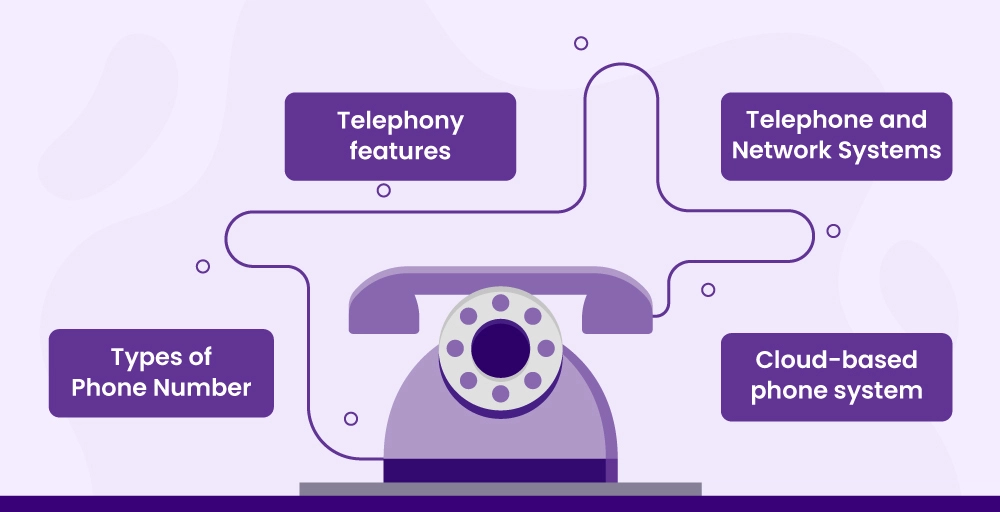
Understanding some key terms is essential before setting up a business phone system. Here’s a breakdown of some must-know ones:
1. Telephony Features
Automatic Call Distribution(ACD)
It is an automated system for distributing phone calls based on pre-established criteria, commonly used by call centers. With ACD, customer service portals can route calls to agents based on the type of inquiry, such as billing, technical support, etc.
Call Analytics
Call analytics is a process of gathering, analyzing, and improving voice calls in a VoIP system through the use of data analysis tools. With this analysis, you can get an understanding of which marketing channels drive calls; businesses can optimize their budget and focus on what works.
Call Coaching
Call coaching also known as call whispering is a process of improving the performance of sales and customer service teams who handle phone interactions. It involves providing real-time feedback and guidance to agents during customer calls to improve their communication skills, customer service, and sales performance.
Call Continuity
This feature ensures a continuity of service when a connection is lost, indicating that cloud phone services continue to be available. Businesses with remote employees can ensure they’re reachable even if the office phone system is down. Furthermore, calls can be rerouted to their mobile phones or other devices.
Call Logs
It is also known as call history. You can see records of how many calls you receive, how they are handled, and how many are outgoing in your cloud phone system. For instance, analyzing call logs to see how effective marketing campaigns are in driving calls to your business.
Call Park
Using call parking, you can place an active call on hold and retrieve it from another phone within the system. You can pause and pick up a call at a later time, like putting a call on hold. For instance, receptionists can park a call while paging the intended recipient or transfer to voicemail if unavailable.
Call Queue
A call queue is a virtual waiting line that holds callers on hold until a customer service agent becomes available. Most call centers use call queues to manage inbound calls from customers with questions or issues.
Direct Inward Dialing
A service that allows employees to have their own telephone numbers without having to have separate lines. Sales teams can have dedicated DID numbers to make them more reachable for potential customers. Support teams can use DIDs to handle customer inquiries efficiently.
Integration
This is a VoIP capability that allows your cloud phone system to be integrated (connected) with additional systems that you use on a daily basis, such as your POS system, your CRM system, your ERP system, or your data management system.
Interactive Voice Response
IVR is an automated telephone system that routes calls to the appropriate people, records information about callers, and assists them. It interacts with callers through voice prompts to gather information, provide assistance, or route calls to the appropriate destination.
Porting
Business phone number porting is the process of transferring your existing phone number to a new phone service provider. Numbers are transferred from one service provider to another during this process. This feature enables users to retain their contact information while switching providers, ensuring continuity and convenience in communication.
Unified Communications
It combines voice calls, video conferencing, and instant messaging into a single, unified system for communication within an organization. Unified communication enhances communication efficiency, collaboration, and productivity by providing a unified platform for seamless interaction across different channels.
Voicemail Transcription
With voicemail transcription, users can read review voicemail messages instead of listening to them when they convert voicemail messages into text format.
Call Routing
With this system, it ensures that your call gets to the correct destination efficiently depending upon the skills and capacity of the organization team.
Call Forwarding
Another popular word for call forwarding is call diversion, which is a telecommunication feature that can effectively reroute incoming calls from one destination to another. It functions using several network setups and signaling mechanisms. This allows you to seamlessly transfer your calls.
Voice-to-Text
Voice-to-text, otherwise known as speech-to-text, is speech recognition software that listens to audio and gives outputs as a text transcript.
SMS/MMS
SMS (Short Message Service) is a messaging protocol primarily for sending text messages, while MMS (Multimedia Messaging Service) allows for the transmission of multimedia content like pictures, videos, and audio alongside text, typically between mobile devices.
Auto-Attendant
An auto attendant is another type of ACD (automatic call distribution system). A simple menu of options allows auto attendants to route calls automatically to extensions, outside lines, or recordings. It is important for you to know that an auto attendant can recognize keypad inputs and allow your callers to navigate the menu and reach their desired destination.
2. Types of Phone Number
Local Numbers
There are several types of local numbers, including those which are assigned to specific geographic regions or localities. With local numbers, you enable your customers, business partners, or community members to make calls to each other without incurring high rates of long-distance calls within that area.
Toll-Free Numbers
Toll-free is a telephone number that allows callers to reach without incurring any charges for the call. Calls to the toll-free numbers 800, 888, 877, 866, 855, 844, and 833 are free to the caller but not the receiver, where the cost of the call is covered by companies (the receiver).
Vanity Numbers
By using a vanity number, your brand’s identity can be represented through the lettering (for example, 1-800-SWEETS). Using these numbers makes customers more likely to recognize your company when they need services and keep your business phone number top of mind.
However, there are limited options when it comes to getting highly memorable numbers, and they can be quite expensive. Additionally, the effectiveness of a vanity number can depend on factors like local calling areas and the creativity used in designing the word or phrase.
Mobile Number
A mobile number is a series of digits used to identify a specific device on a mobile phone network. With it, you can call, send, and receive texts, as well as access other mobile services. To dial it, you must follow a typical format that includes a country code and a unique subscriber number.
3. Telephone And Network Systems
VoIP Gateway
A VoIP gateway is a device that converts analog phone signals into packets of digital data in order to enable voice communication over the Internet. When packets are transmitted through the gateway, they are encrypted and routed to the correct recipient, ensuring they are secure. However, different VoIP Gateways provide varying levels of functionality.
For instance, some handle analog phone lines (FXS), while others connect to digital PBX systems (FXO). So, understanding your existing infrastructure before setting up a business phone system is key to choosing the right gateway.
PBX Systems
A private branch exchange (PBX) system provides voice, data, and other communication services at one location through a central service. As a result, multiple users can share the same line.
As an example, PBXs permit each employee in an office to have his or her own extension. Digital services can be integrated into PBXs using SIP trunking, which is typically not associated with analog telecom services.
IP Phone
An IP PBX, or VoIP phone, is a phone system enabled with an IP telephone system, used to connect business phones via an Internet connection.
Using either an ethernet cable or a WiFi connection, an IP phone connects directly to the internet. In these devices, calls are made using a VoIP gateway instead of a traditional office phone setup.
USB Phone
A USB phone looks like a PSTN phone when plugged into a computer’s USB port. Instead of incorporating VoIP technology, the USB phone acts as an audio interface, similar to a headset.
As a result, you will have a clearer call with less audio leaking from your own speakers (echo from your own voice). Rather than playing your call through your PC, the audio is isolated into the USB phone.
PSTN Phone
Telephones connected to the public switched telephone network are known as PSTN phones. PSTN phones are also known as Plain Old Telephone Service (POTS) because they do not require an internet connection and work even during power outages.
Prior to the development of mobile phones and VoIP technology, physical phone lines and these devices were the primary means of communication.
4. Cloud-Based Phone System
In contrast to analog phone lines, a cloud phone system allows users to place telephone calls over the internet. Unlike on-site PBX software servers, cloud phones are hosted off-site in secure data centers.
Several devices, such as VoIP-enabled phones, smartphone applications, and computer software, can access cloud phone systems.
Corporate Network
Typically, a corporate network is comprised of computer systems, routers, and other technology infrastructures that function as internal intranet networks (instead of externalized internet networks) that can only be accessed by a select number of employees.
A corporate network is designed to ensure the secure and reliable flow of data. In order to provide this functionality, the network may use local area networks (LANs), wide area networks (WANs), virtual private networks (VPNs), and other protocols.
Interactive Voice Response (IVR)
Through Interactive Voice Response (IVR), incoming callers can obtain information using prerecorded messaging through a voice response system. By using either a touch-tone keypad or speech recognition, users can navigate menu options without having to speak to an agent. As an added benefit, this technology allows calls to be routed to certain departments or specialists.
Enable Landline
You can use your traditional landline phone number to make and receive calls with a VoIP system. This can be made possible when a VoIP network is connected to a landline phone through a VoIP adapter also known as Analog Telephone Adapter (ATA).
For businesses or individuals who want to keep their landline phones and phone numbers while utilizing VoIP’s more advanced features in their landline numbers, it can be particularly useful.
Enhance Business Phone System With KrispCall
Have you ever wondered about the benefits of using a virtual phone app for your business and employment needs? If yes, then KrispCall offers you just that, along with a remarkable service enhanced by advanced features that make your business calls more efficient.
Not only that, with KrispCall’s ability to seamlessly integrate with your existing business phone it offers a a hassle-free solution for enhancing your telephony infrastructure. Whether you use a PC or mobile device, KrispCall works effortlessly across all platforms, which helps to empower your team to stay productive and focused no matter what device they use and where they are.
So what’s the wait? You can try the demo and check out the KrispCall website for more information. Also, sign up for our services and get to know our system by downloading our app today!
Wrapping Up!
For any business, to have effective communication is huge for success. In the same way, if you want better communication, it is also important to get a better understanding of key terms and carefully consider various other factors when setting up your business phone system.
You must take a look at these terms in order to customize your communication infrastructure, from VoIP to PBX, based on your needs. It is imperative that you (as a business owner) have a comprehensive understanding of these ideas so that it can profit and expand in the globalized marketplace.
If you are a small startup or a large corporation looking to set up a cloud-based business phone system, KrispCall is just the answer for you. It offers the best flexibility, scalability, and cost-effectiveness. KrispCall offers virtual numbers from 100+ countries, a long list of advanced VoIP features, and seamless integration with other cloud-based applications and popular business tools.
By utilizing KrispCall’s cloud phone system, you will be able to meet and exceed all your telephonic expectations.

